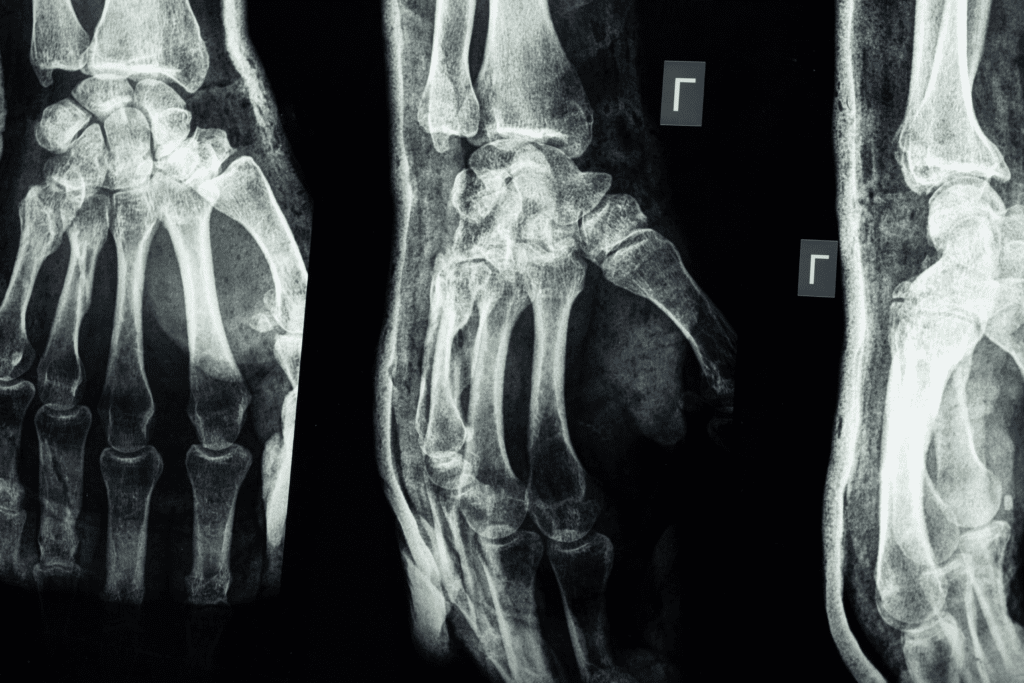Whether it’s long term disability insurance or short term disability insurance, we have you covered.
Disability insurance serves as a critical safety net, offering financial protection in the event that an individual is unable to work due to a disability. This type of insurance is divided into two main categories: short-term and long-term disability insurance. Short-term disability insurance provides coverage for a brief period, typically ranging from a few weeks to a few months, and is ideal for temporary disabilities resulting from accidents or illnesses. On the other hand, long-term disability insurance offers financial support over a more extended period, potentially lasting for several years or until the individual reaches retirement age, making it suitable for more severe or permanent disabilities.
The importance of disability insurance in financial planning cannot be overstated. It ensures that individuals have a reliable source of income even when they’re unable to earn a paycheck due to health issues, thereby safeguarding their financial stability and helping to cover living expenses, medical bills, and other essential costs during challenging times. Integrating disability insurance into one’s financial plan is a prudent strategy to mitigate the economic impact of unforeseen health problems, ensuring peace of mind and financial security for the future.
What is Disability Insurance?
Disability insurance is a type of insurance coverage designed to replace a portion of your income if you become unable to work due to illness or injury. The primary purpose of this insurance is to provide financial security, ensuring that individuals have a steady income stream even when they’re facing health challenges that prevent them from performing their job duties. This safety net is crucial for maintaining one’s standard of living, allowing for the coverage of daily living expenses and medical costs without depleting savings or going into debt.
Types of Disability Insurance

Short-term Disability Insurance
Short-term disability insurance is designed to provide financial assistance for a temporary period, typically ranging from a few weeks to several months. This type of short term disability coverage insurance is particularly beneficial for individuals who suffer from an illness or injury that temporarily impedes their ability to work, ensuring they receive a portion of their income during their recovery period. Policies vary, but coverage usually starts a few days after the individual is unable to work and can extend up to one year.
Long-term Disability Insurance
Long-term disability insurance offers coverage for more extended periods, often lasting from a few years up to retirement age. This more long term coverage ofinsurance is essential for individuals facing serious health issues that significantly impact their ability to work for long durations or permanently. Long-term disability insurance kicks in after the expiration of short-term disability benefits or a designated waiting period, providing a continued income stream that helps individuals maintain their financial stability during prolonged periods of disability.
How Does Disability Insurance Work?

The Process of Obtaining Disability Insurance
The journey to securing disability insurance begins with selecting the right policy that meets your needs. Individuals can obtain disability insurance through their employer, as part of a group insurance plan, or by purchasing a policy directly from an insurance company. The process involves evaluating different policies to understand the terms, coverage limits, and the cost associated with disability insurance replaceseach option. Once a suitable policy is identified, the applicant completes an application, which may require detailed information about their health, occupation, and income. This information helps insurers assess the risk and determine the policy’s terms and premiums.
Understanding the Policy: Premiums, Coverage, and Benefits
A disability insurance policy outlines the specifics of the full disability coverage amount including the premium amount, the benefits provided, and the conditions under which these benefits are payable. Premiums can vary widely based on factors such as the policyholder’s age, health, occupation, and the extent of coverage. The policy details the percentage of income that will be replaced, the duration of the benefit period, and any waiting periods before benefits begin. It’s crucial for policyholders to understand these details to ensure the policy meets their expectations and provides adequate protection.
The Role of Underwriting in Disability Insurance
Underwriting is a critical component of the disability insurance process, where insurers assess the risk of insuring an individual disabilitybased on their health, lifestyle, and occupational hazards. This evaluation determines the policy’s terms, including eligibility, premiums, and exclusions. The underwriting process may involve reviewing medical records, conducting health assessments, and analyzing income levels to accurately gauge the risk of disability. This meticulous approach ensures that the policy is priced appropriately for the risk involved, safeguarding both the insurer and the insured. Through underwriting, insurers can offer tailored coverage that reflects the unique risks and needs of each policyholder, ensuring that individuals have the right protection in place.
Who Needs Disability Insurance?

Target Demographics for Disability Insurance
Disability insurance is a critical component of financial planning for a wide range of individuals, particularly those who rely on their income to support themselves and their families. This includes employees in both physically demanding jobs and professions considered less physically risky but still susceptible to conditions that could lead to disability. Freelancers, self-employed individuals, and small business owners also significantly benefit from disability insurance, as they might not have the same safety nets as those employed by larger organizations. Young professionals, too, are encouraged to invest in disability insurance early in their careers, as the likelihood of becoming disabled before retirement is higher than most people assume.
Assessing Your Need for Disability Insurance Based on Occupation and Lifestyle
The need for disability insurance can vary greatly depending on one’s occupation and lifestyle. Those in physically demanding or high-risk jobs, such as construction workers, firefighters, or police officers, face a higher risk of serious injury or illness and, consequently, a greater need for disability insurance. However, even individuals in seemingly low-risk professions are not immune to disabilities that can arise from chronic illnesses, mental health issues, or non-work-related injuries.
Lifestyle factors also play a significant role in assessing the need for disability insurance. For instance, individuals with dependents or significant financial obligations, such as a mortgage or student loans, should consider disability insurance to ensure their financial responsibilities can be met even if they’re unable to work. Additionally, those without substantial savings or an emergency fund may find disability insurance particularly crucial as it provides a financial safety net during periods of unexpected health issues.
In essence, almost anyone who depends on their income to maintain their standard of living should consider disability insurance as a key component of their financial security strategy. It’s about protecting not just the individual, but also those who depend on them, ensuring financial stability in the face of life’s uncertainties.
How to Choose the Right Disability Insurance Policy

Factors to Consider When Selecting a Policy
Choosing the right disability insurance policy is a critical decision that requires careful consideration of several key factors. These factors include the coverage amount, benefit period, waiting period, and the reputation and reliability of employee benefits package ofthe insurance provider. Understanding these elements can help you select a policy that best matches your needs and provides adequate financial protection.
Coverage Amount
The coverage amount is the percentage of your income that the policy will replace in the event of a disability. It’s essential to choose a coverage amount that adequately supports your financial needs, considering your current income, monthly expenses, and any other sources of income you might have. A typical policy might replace 60% to 70% of your income, but the exact amount will depend on the policy terms and your preferences.
Benefit Period
The benefit period refers to the length of time you will receive payments after a disability claim is approved. Benefit periods can vary significantly, from a few years to until retirement age. When regarding disability insurance worth andselecting a benefit period, consider the nature of your profession and the likelihood of suffering from a long-term disability. Longer benefit periods offer more extended protection but may come with higher premiums.
Waiting Period
The waiting period, also known as the elimination period, is the time between the onset of a disability and when you start receiving benefits. This period can range from 30 days to several months. Choosing the right waiting period involves balancing the need for early benefits with the cost of premiums. A shorter waiting period means benefits start sooner, but it can also lead to higher premium costs.
Comparing Providers and Policies
Finally, it’s crucial to compare different insurance providers and policies. Look for insurers with strong financial stability, positive customer reviews, and a history of handling claims fairly. Compare the features, benefits, exclusions, and costs of various policies. Consider consulting with a financial advisor or an insurance broker who can provide personalized advice and help you navigate the options.
The Vital Role of Disability Insurance
Disability insurance stands as a fundamental pillar of financial security, designed to safeguard individuals and their families against the economic hardships that can arise from unexpected illnesses or injuries leading to disability. Its importance cannot be overstressed, as it ensures a continuation of income when you’re unable to work, helping to maintain your standard of living, cover essential expenses, and protect your savings and investments during challenging times.
The journey to selecting the right disability insurance policy requires a thoughtful assessment of your personal needs, lifestyle, and financial situation. It’s crucial to consider various factors such as the desired coverage amount, the appropriate benefit and waiting periods, and the reputation and reliability of individual disability insurance and providers. Each of these elements plays a significant role in tailoring a policy that not only meets your specific requirements but also offers peace of mind knowing that you and your family are protected.
FAQs About Disability Insurance
Is disability insurance only for physical injuries?
No, disability insurance covers a wide range of conditions, including illnesses and mental health issues, not just physical injuries. The key criterion for coverage need disability insurance,is that the condition must limit your ability to work, regardless of whether it’s a physical injury, a chronic illness, or a mental health condition.
How much does disability insurance cost?
The cost of disability insurance varies based on several factors, including your age, health, occupation, the coverage amount, and the specifics of the policy, such as the benefit and waiting periods. Generally, premiums for partial disability onlycan range from 1% to 3% of your annual income, but this is a rough estimate, and your actual premiums could be higher or lower.
Can I get disability insurance if I’m self-employed?
Yes, self-employed individuals can and should consider pay benefits beforeobtaining disability insurance. Being self-employed often means lacking the safety net that employer-provided benefits offer, making it even more crucial to have disability insurance to protect your income.
Does disability insurance cover pregnancy?
Short-term disability insurance often covers pregnancy and childbirth, providing benefits for a specified period during maternity leave. However, the specifics can vary by policy, so it’s important to check the details of your policy or consult with your insurance provider.
Can I have multiple disability insurance policies?
Yes, you can have multiple disability insurance policies, and this can be a strategy to ensure adequate coverage. For example, you might have a base disability policy through your employer and a supplemental policy that you’ve purchased individually. The combined benefits from these policies can provide a higher level of income replacement in the event of a disability.







